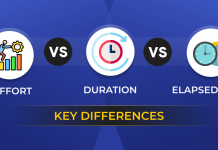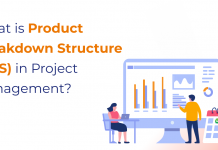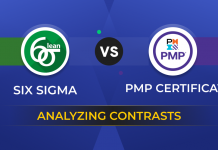
In today’s highly projectized business landscape, organizational change management is considered a regular business practice. The concept of change is seldom simple. But it becomes more challenging for a complex project to implement change. There are a lot of change management models that organizations use to successfully implement change. The way you incorporate changes will have an impact on business success in the long run.
“Change management helps you look at the impacts to people, how they are going to react to the barriers to adopting that change, and help them. Ultimately, to be able to adapt and move forward.”
-Rachel Breitbach, the Change Management and Agility Practice Lead at Farwell
Change Management Models – Introduction
When the change becomes an essential aspect of organization development, it should implement suitable approaches to put those changes into effect. Implementing successful change management strategies instead of going with random methods will surely enhance your odds of success. That’s where the concept change management models come in.
Change management models provide best practices and guidelines for the organizations, which would help them throughout the change management planning and implementing phase. Implementing a suitable change management model for your project/organization would help you collect all the stakeholders’ essential data. It also facilitates a change management workflow for implementing the new change.
Top Change Management Models to Consider
There are various change management models, and each has a unique approach to fit the organization’s transformation in a better way. Let’s take a look at the change management models that drives better organizational transformation:
Kotter’s Change Management Model
Kotter’s change management model is devised in the name of Harvard Business School professor, author, and entrepreneur John P.Kotter. This widely accepted model emphasizes change and the people who will be affected by the change.
The model is divided into 8 phases, and each of them focuses on the employee’s response to the change.
- Create urgency – The first step in the process is to create urgency among the people to move towards their planned goals
- Build the right team – Build a team with suitable skill sets, personalities, and commitment, which would help to drive change within the organization
- Form the right vision – Create a suitable change vision by considering not just the strategies but also creativity, objectives, and emotional connection
- Enlist the team – Ensure to get everyone involved in the team onboard to know about their roles
- Enable the action by removing obstacles – Identify and eliminate the roadblocks for effective change management
- Generate short term goals – Focus on short-term goals, which in turn would help to attain success without any stress
- Sustain – Regardless of the challenging things you might come across, never give up during the change management process
- Incorporate change – Identify the new changes made and help the employees to adjust throughout the process
ADKAR Change Management Model
ADKAR change management model was coined by Jeff Hiatt, the founder of Prosci. This model is used to identify the change gaps in the process and suggests providing relevant training to employees for successful change management. The process can be broken down into parts and determine where change is necessary or not effective.
Though the model focuses on business-oriented goals, it is also useful for the employees to adapt to the change process quickly. It also provides the capability to identify why changes made are not working as expected and delayed results.
ADKAR model stands for:
- Awareness – Everyone in the organization is aware of the change
- Desire – Bring the required change to the team
- Knowledge – Regarding how to drive change
- Ability – Ensure that the team members possess all the capability and skills to incorporate change regularly
- Reinforcement – Continue to work with the employees, even after the change is implemented
Mckinsey 7-s Change Management Model
McKinsey 7S change management model came into existence in the 1980s by the consultants working at McKinsey & company. It targets all the business aspects that need to be well defined before implementing the change strategy. The models also include emotional and practical components essential for the employees to deal with the change quickly.
There are seven components to focus on:
- Strategy – Change management plan comprising of stepwise structure
- Structure- The way organization activities are categorized or structured
- Systems – Resources used to complete the assigned tasks regularly
- Shared values – Means core values of the organization
- Style – Manner in which change is implemented
- Staff – People involved in the change process
- Skills – Skills that will help implement change
Lewin’s Change Management Model
Lewin’s change management model is an efficient yet straightforward model that made us understand the structured change process through various ice blocks states. Kurt Lewin coined the model name in the 1950s, which is one of the most significant change management models to date. It is broken into three smaller and manageable steps:
- Unfreeze – Unfreeze is the initial phase where the organizations must get prepared for the change. During this stage, most people resist change, and the organization should explain the need for change to the employees. The main target of this stage is to overcome the team’s resistance to the change process.
- Change – Real change transition occurs at this stage and takes time for completion as the employees need time to adapt to new changes and happenings. At this phase, having good leadership, reassurance, and effective communication make the change process easier for the people involved
- Refreeze – The refreeze phase is where change is accepted and implemented by the people. The organization returns to a stable stage again. People involved in the change process should adopt the change even after the required objectives are met/ achieved. Gradually, employees get confident and comfortable with the changes made to the process
Kübler-Ross Five Stage Model
Kubler-Ross Five Stage model was coined after world-renowned scientist Elisabeth Kubler-Ross. She is also the creator of “Change Curve” and “The Five Stages of Grief.”
This model targets employees who are ultimately responsible for the change. It helps the individuals to accept the change physically and emotionally. This model can be applied to job loss scenarios, change in work, and less serious health issues. The following stages are associated with this model:
- Denial – In this phase, employees are unable to accept the news of change. They might come across a sense of shock and numbness as they resist the change and may not want to believe their surrounding happenings
- Anger – Once the news of change is accepted, the first reaction is anger. When the employees realize that the change process will affect them, it gets converted into anger
- Bargaining – This stage entails the best possible solution to avoid ending up with the worst-case scenario
- Depression – This stage occurs when bargaining is of no worth; employees end up moving into depression states with a hopeless mind state. There are various symptoms to observe the depression stage of a person. Some of them are low motivation, lack of interest or happiness, non-commitment, and low energy
- Acceptance – When the employees realize that there is no use in fighting for change or being depressed, they may have to accept the change and gradually adapt to it
Conclusion
Each of these change management models highlight the role of employees in implementing the change. Employee communication is a vital aspect of every change management model. There is no specific model that’s the best for your organization. Instead, choose which makes much sense to your requirements or take an element from each and apply it to your business scenario.
Some of the popular Change Management and Project Management certifications that professionals can take up to drive organizational change management are:
















